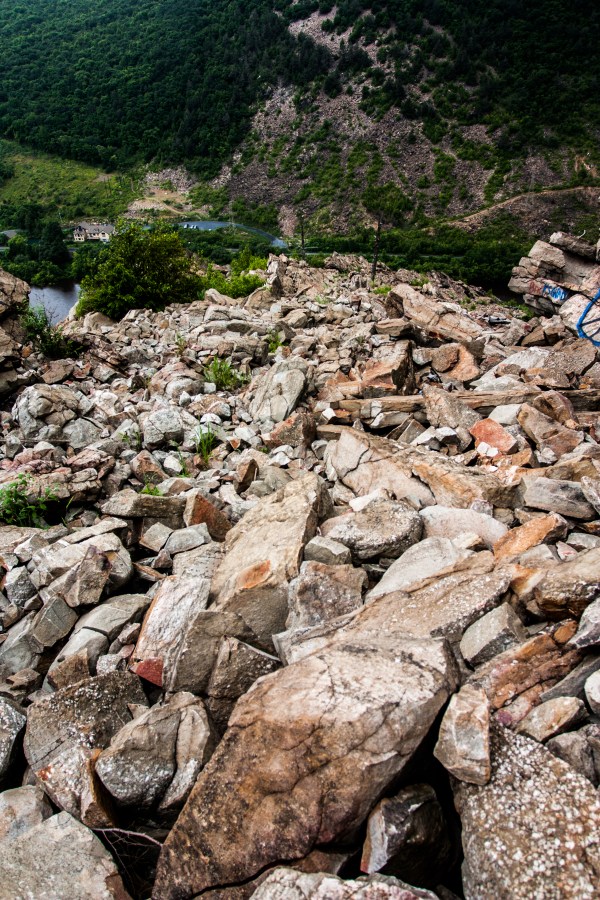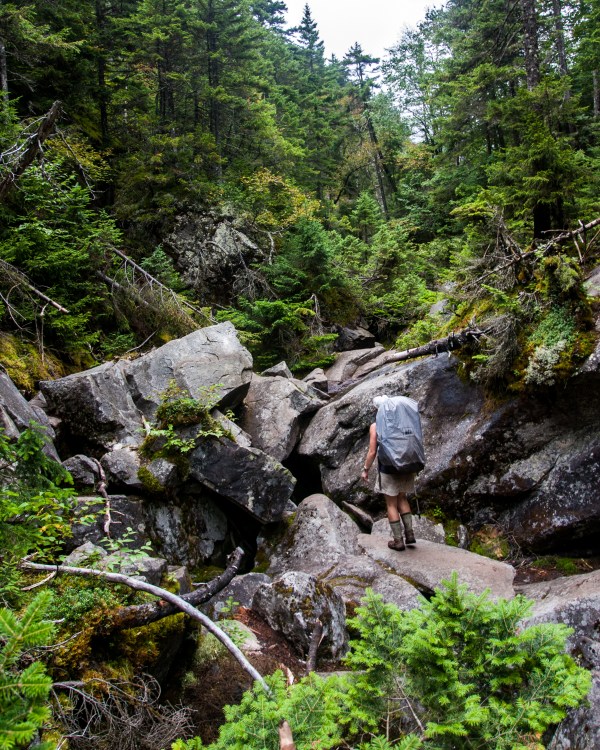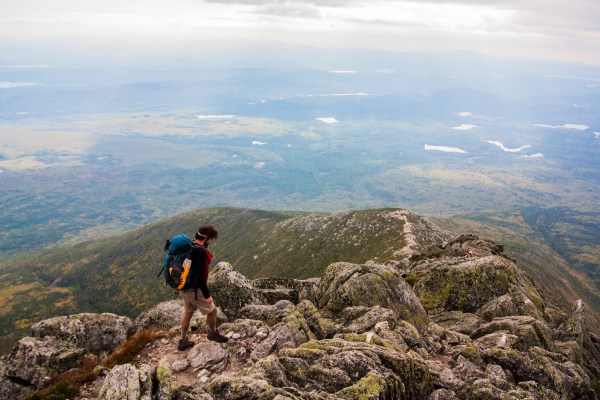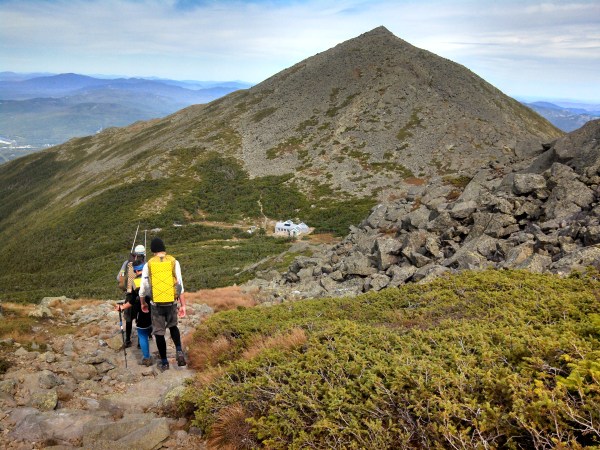When I ask you to picture the mountains that span the Appalachian Trail, what comes to mind? Massive, majestic, daunting peaks?
Likely not—and you’d be right. It is for this reason that the uninitiated confuse the 2,189 miles (give or take, depending on the year) that make up the United States’ original long trail as easy hiking. Some of it is. Most of it, however, is excruciatingly difficult.
In fact, of the three long trails in the United States (the Pacific Crest Trail, Continental Divide Trail, and Appalachian Trail), the AT offers the most elevation change on average. I’ve hiked all across the country, including the entire Appalachian Trail, Mount Whitney in California and several 14,000 footers in Colorado, and I can attest that the AT presents some of the toughest terrain in the country.
So if you’re looking for a challenging day hike, you need not venture west to find it. Here are seven of the hardest day hikes on the Appalachian Trail.
7. The Priest
This hike is less than 9 miles round-trip but don’t confuse its short distance with ease. The Priest showcases central Virginia’s steepest climb with more than 3,000 feet of elevation gain over the 4.3-mile one-way trek (for those who start at VA56). To beef up an already challenging hike, park at the Crabtree Falls trailhead (a half-mile west of the AT) to hit the summit of the Priest, descend to the Tye River, climb to the summit of Three Ridges Mountain, and then back for a 24.6-mile round-trip haul.
Bonus fun fact: The trail log at the Priest Shelter also serves as a satirical-confessional, whereby hikers “confess their trail sins to the Priest.”
6. Lehigh Gap / Superfund Trailhead

Photo courtesy Kenny Howell
If there’s one word to associate with the Appalachian Trail in Pennsylvania, “steep” would not be it; the correct answer is “rocky.” Of the fourteen states the trail passes through, Pennsylvania is one of the flattest (not to be confused with fastest, again—the rocks). That’s why countless hikers are caught off guard when they reach the Superfund Trailhead at Lehigh Gap, because what they’re presented with is a 900-foot seemingly vertical rock scramble over the span of just three-quarters of a mile. Upon reaching the top of this climb and looking back at the Lehigh River below, you will forever have a worthwhile retort to those who speak of Pennsylvania’s “flat” terrain.
5. Cheoah Bald
The anticipation of reaching Nantahala Outdoor Center in Bryson City, North Carolina—a hiker’s paradise complete with a restaurant, bar and convenience store—has a way of overshadowing the climb that awaits to the north. And in this case, ignorance is bliss as the climb from the NOC to Cheoah Bald is not to be looked forward to unless you’re a glutton for punishment. The nearly 3,000-foot ascent over 5.8 miles is followed by a 300-foot descent and then another 600-foot climb to reach this hike’s destination, for a total round-trip trek of 15.8 grueling miles.
4. Mahoosuc Notch

Photo courtesy Kenny Howell
Some refer to it as the most difficult mile of the AT, others the most fun. Anyway you shake it, Mahoosuc Notch is undeniably the trail’s slowest mile. Navigating this gap in western Maine is the wilderness version of a jungle gym with more painful repercussions. Put your trekking poles away, because going up, over, under and between these massive boulders is an all-limb effort; beginners are encouraged to find a different hike. Finding your way here for a day hike can be a bit tricky; these directions are the best I’ve found.
3. Mount Washington
Likely the most notorious peak of the entire trail, Mount Washington cracks this list more for its weather than the difficulty of the climb, despite being the second-highest point of the AT at 6,288 feet. Located in the center of the Presidential Range in New Hampshire’s White Mountain National Forest (simply referred to as “The Whites”), Mount Washington boasts arguably the most inclement weather on earth. For 76 years, it held the record for strongest wind gust, only losing that title to Australia’s Barrow Island during Cyclone Olivia (at 253 mph) in 1996. It’s advisable to check the weather report at the nearby Lakes of the Clouds Hut before attempting a summit. Definitely bring rain gear, several layers, snacks and plenty of water. Be forewarned: Some of the luster of this climb is lost as you will be greeted by a massive parking lot, restaurant, gift shop and tourists at the summit.
2. Mount Katahdin

Photo courtesy Kenny Howell
From the perspective of a northbound thru-hiker, the Appalachian Trail saves the most epic for last. That is to say, the trail’s northern terminus, Mount Katahdin, is not only one of the most challenging ascents of the entire trail, it is also one of the most spectacular. This picturesque climb features the gorgeous Katahdin Stream Falls, a steep boulder field climb supported with metal rungs through Hunt Spur, and at nearly two-and-a-half miles above tree line, incredible summit views on a clear day. From your starting point at the Katahdin Stream Campground, the trail gains 4,162 feet in just 5.2 miles. Like most climbs in northern New England, prepare for the worst (i.e., harsh weather) and hope for the best.
1. Mount Madison

Photo courtesy Maggie Wallace
Perhaps overshadowed by its aforementioned Presidential Range brother to the south, Mount Madison offers one of the steepest, most challenging rock scrambles of the entire trail, gaining 2,812 feet over a 2.6-mile span (a more than 20% incline). The most feasible approach to this day hike is the southbound version, parking at the Joe Dodge Lodge at Pinkham Notch and following the Old Jackson Road to Madison Gulf to Great Gulf Trail to Osgood Cutoff to Osgood Trails, and then back for a total distance of 14.6 miles round-trip. The summit is well above tree line and offers stunning views of The Whites without all the fuss found at Mount Washington. Get an early start for this one.
